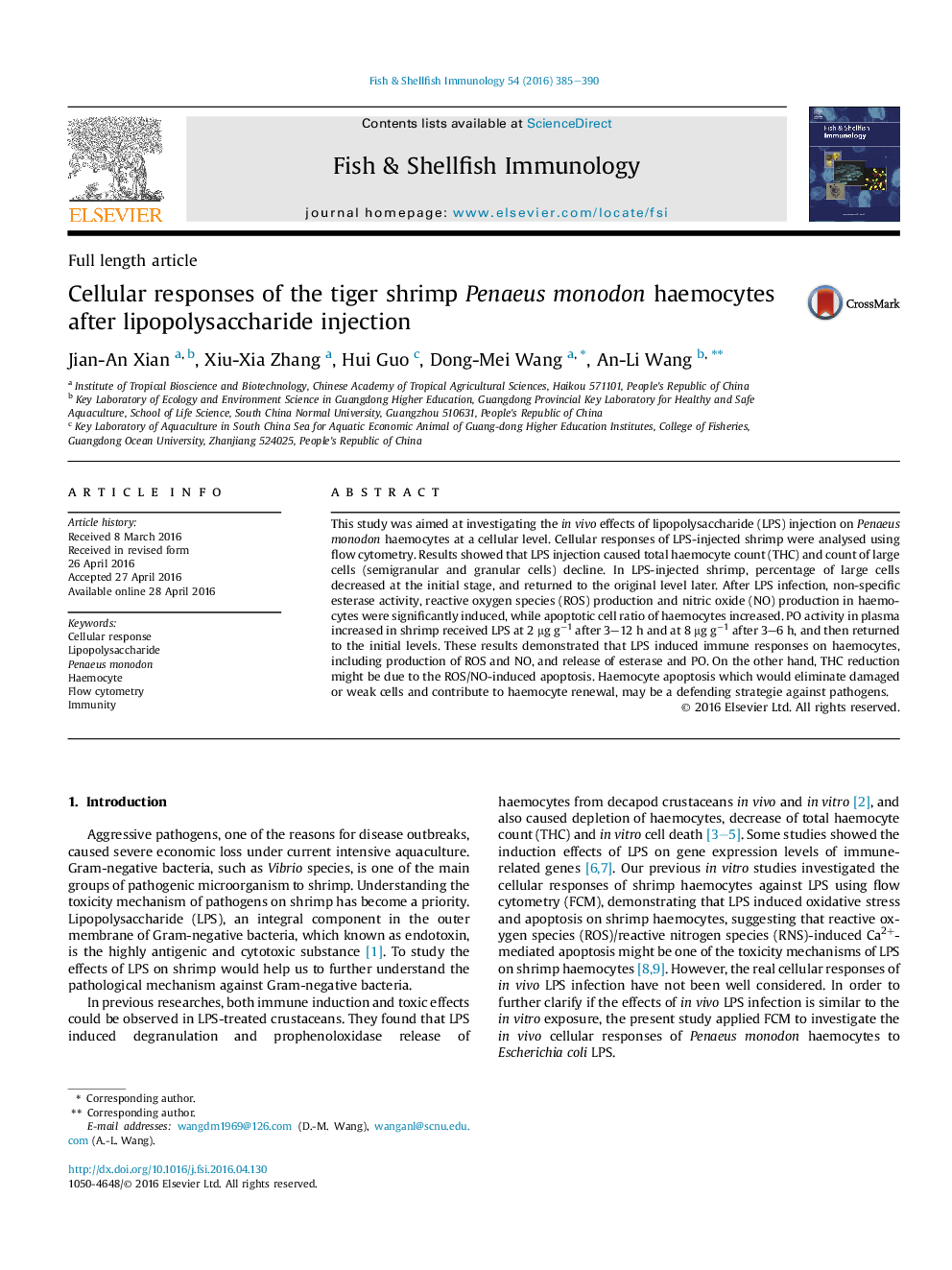| Article ID | Journal | Published Year | Pages | File Type |
|---|---|---|---|---|
| 2430629 | Fish & Shellfish Immunology | 2016 | 6 Pages |
•Cellular responses of LPS-injected shrimp were analysed at a cellular level using flow cytometry.•LPS infection induced degranulation, activation of proPO and esterase, and generation of ROS and NO in haemocytes.•ROS/NO-caused haemocyte apoptosis and loss might be the cytotoxicity mechanism of LPS on shrimp.
This study was aimed at investigating the in vivo effects of lipopolysaccharide (LPS) injection on Penaeus monodon haemocytes at a cellular level. Cellular responses of LPS-injected shrimp were analysed using flow cytometry. Results showed that LPS injection caused total haemocyte count (THC) and count of large cells (semigranular and granular cells) decline. In LPS-injected shrimp, percentage of large cells decreased at the initial stage, and returned to the original level later. After LPS infection, non-specific esterase activity, reactive oxygen species (ROS) production and nitric oxide (NO) production in haemocytes were significantly induced, while apoptotic cell ratio of haemocytes increased. PO activity in plasma increased in shrimp received LPS at 2 μg g−1 after 3–12 h and at 8 μg g−1 after 3–6 h, and then returned to the initial levels. These results demonstrated that LPS induced immune responses on haemocytes, including production of ROS and NO, and release of esterase and PO. On the other hand, THC reduction might be due to the ROS/NO-induced apoptosis. Haemocyte apoptosis which would eliminate damaged or weak cells and contribute to haemocyte renewal, may be a defending strategie against pathogens.
